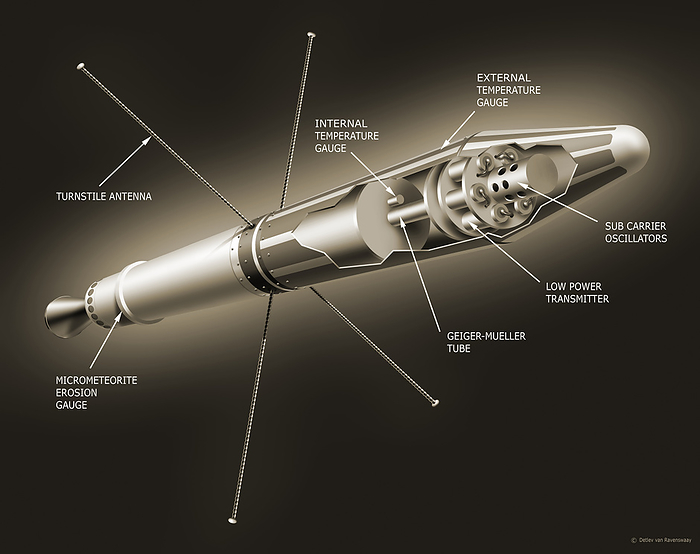
RM
Explorer 1 satellite, illustration
Illustration of America's first successful artificial satellite, Explorer 1 showing part of its interior. Explorer 1 was launched on 31st January 1958, after the USSR took the USA by surprise by launching the world's first artificial satellite, Sputnik 1, on 4th October 1957. The satellite measured 2.05 metres in length and weighed 14 kilograms. It orbited Earth at heights of between 360 and 2520 kilometres until 31st March 1970. It carried, amongst other instruments, a Geiger counter, used to detect cosmic rays. Data collected by the satellite led to the discovery of the Van Allen radiation belt, a torus of charged particles held in place by the Earth's magnetic field., by DETLEV VAN RAVENSWAAY/SCIENCE PHOTO LIBRARY

More
Top Categories
